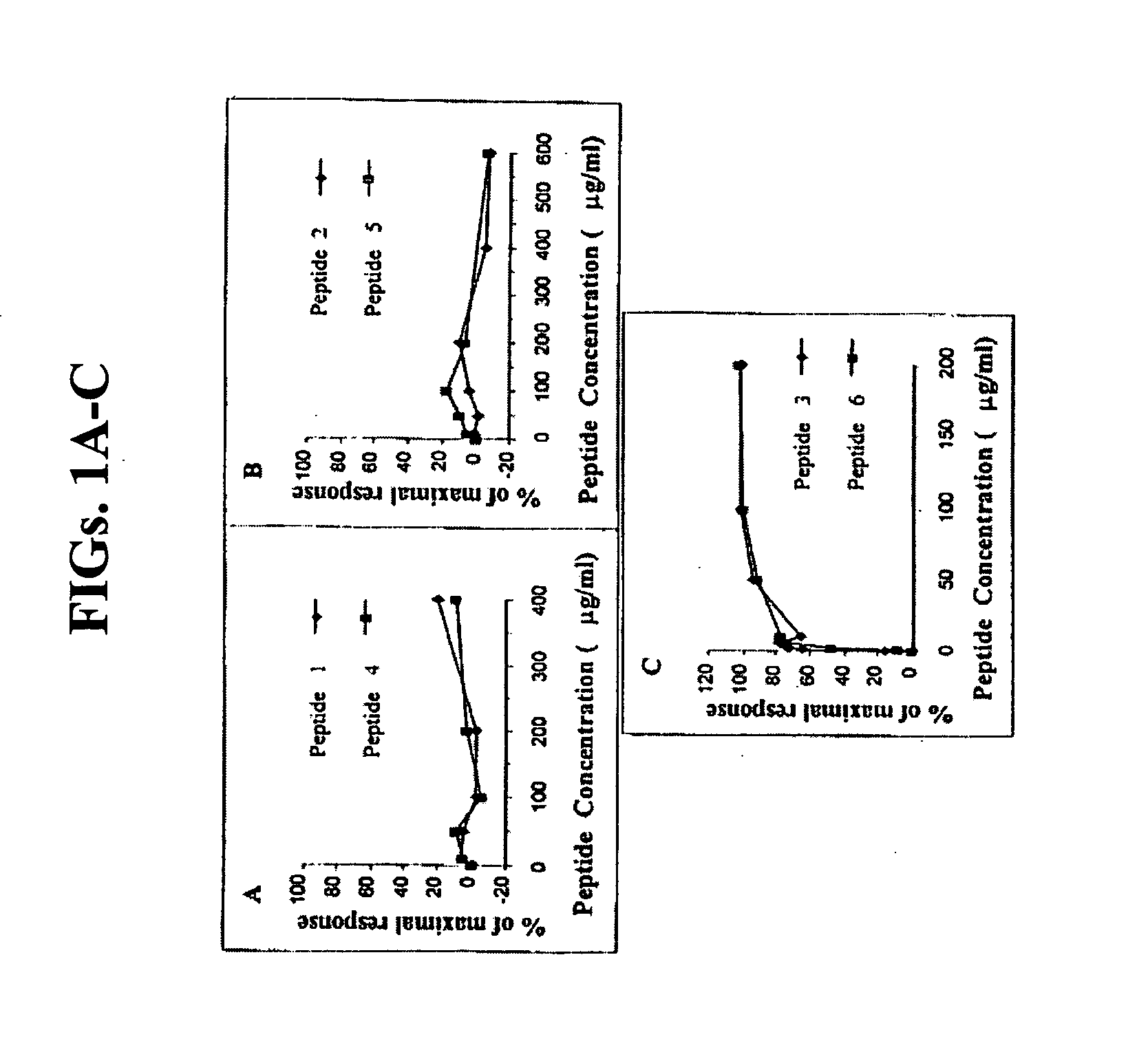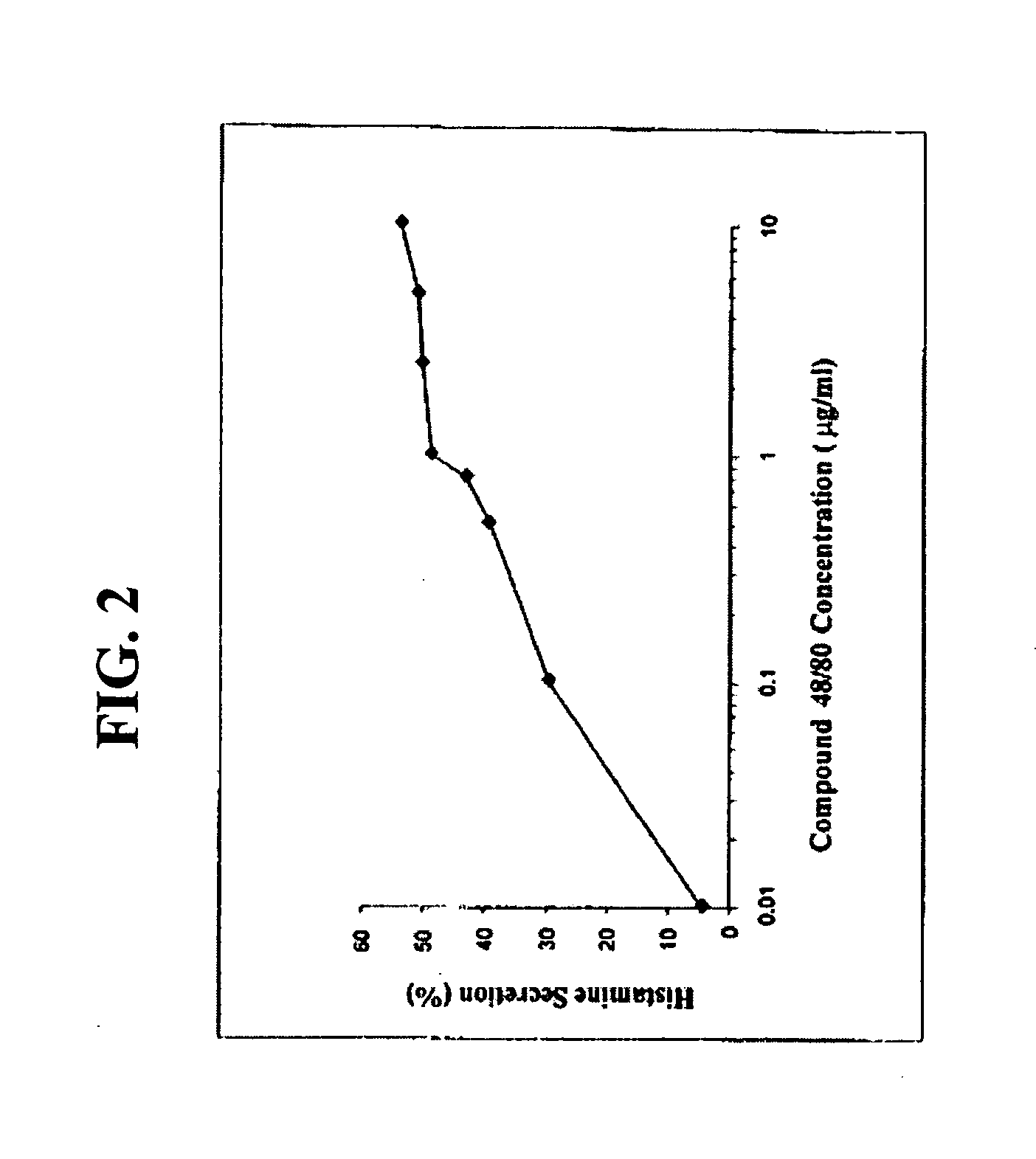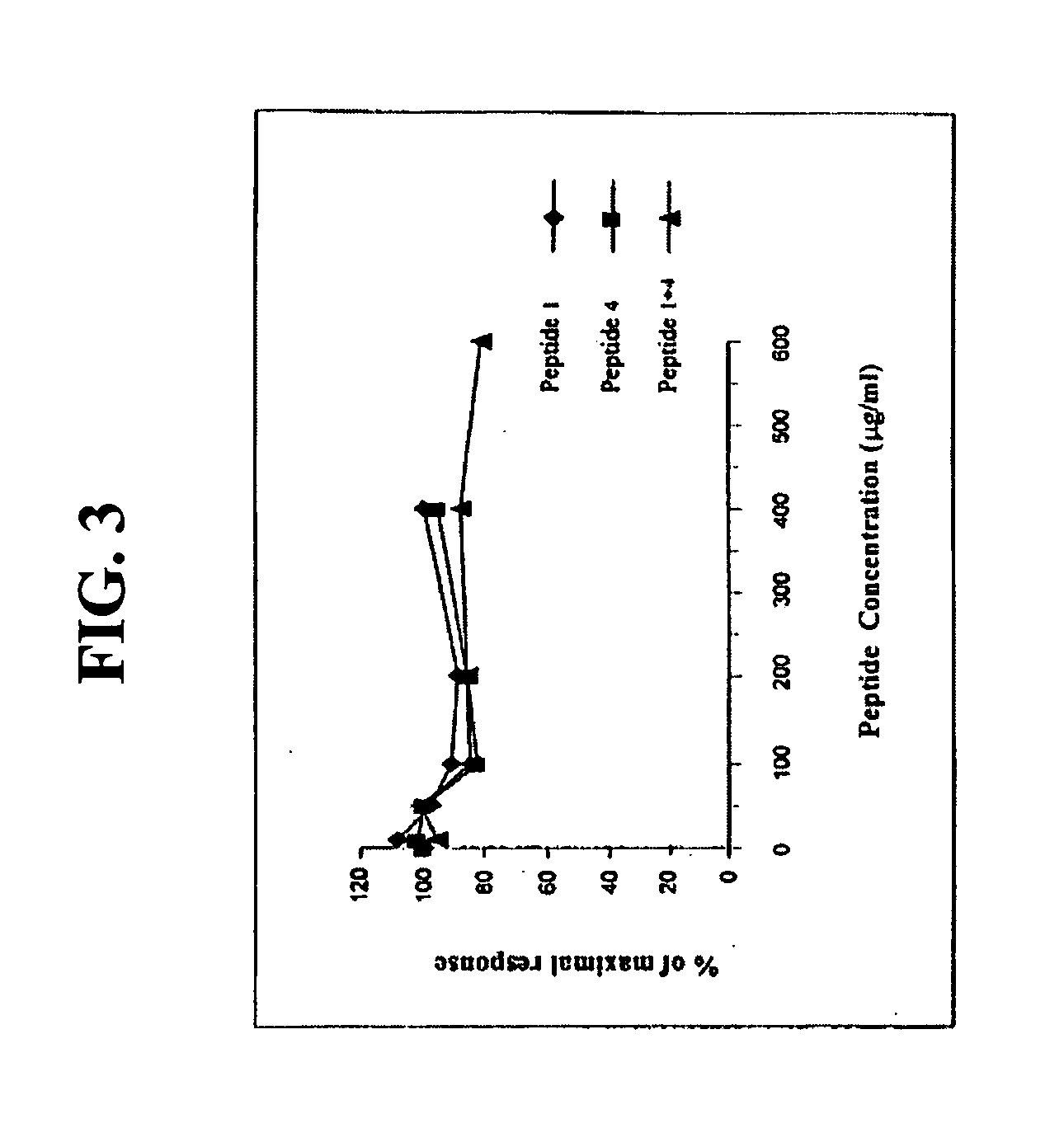Anti-allergic complex molecules
a complex molecule and anti-allergic technology, applied in the field of new therapeutic complex molecules, can solve the problems of disodium cromoglycate not being able to inhibit all types of histamine secretion, anti-histamines cannot counteract the inflammatory reactions effected, and anti-histamines cannot provide a reliable protection against allergy
- Summary
- Abstract
- Description
- Claims
- Application Information
AI Technical Summary
Benefits of technology
Problems solved by technology
Method used
Image
Examples
example 1
Testing of Peptides 1-6 In Vitro
[0107] Peptides 1-6, the sequence of which are detailed hereinbelow of the present invention, as described above, were tested in vitro for their ability to block histamine secretion from mast cells.
1.VTVLALGALAGVGVGKNNLKECGLYSEQ ID NO: 142.AAVALLPAVLLALLAPKNNLKECGLYSEQ ID NO: 233.RQPKIWFPNRRKPWKKKNNLKECGLYSEQ ID NO: 334.VTVLALGALAGVGVGKENLKDCGLFSEQ ID NO: 345.AAVALLPAVLLALLAPKENLKDCGLFSEQ ID NO: 256.RQPKIWFPNRRKPWKKKENLKDCGLFSEQ ID NO: 35
[0108] Rat peritoneal mast cells were chosen as the experimental model, since it was previously shown that both rat peritoneal and human skin mast cells release histamine in response to substance P by an IgE-independent mechanism (Devillier et al., 1986; Foreman 1987a,b; Columbo et al., 1996). It was also demonstrated that the same peptidergic pathway is involved in both rat peritoneal and human cutaneous mast cells (Mousli et al., 4-1994; Emadi-Khiav et al., 1995).
[0109] Compound 48 / 80 was chosen as the allergen ...
example 2
Peptide Modifications
[0129] The results described in Example 1 above demonstrated that both peptide 2 and peptide 5 have the ability to block mast cell degranulation, with peptide 2 demonstrating higher efficacy as compared to peptide 5. Peptide 2 had the highest inhibition of histamine release demonstrated, with 84% inhibition, as opposed to 70% for peptide 5.
[0130] Several point mutations and biochemical modifications were performed in each peptide, in order to improve peptide solubility and efficacy, as well as to investigate structure / function relationships.
[0131] The first such mutation is a point mutation in peptide 5. Specifically, in peptide 5, the glutamic acid in position 18 was replaced by asparagine, to form peptide 5-modified (Peptide 5 m-AAVALLPAVLLALLAPKNNLKDCGLF-SEQ ID NO: 36). In this peptide the last 10 amino acids are homologous to the C-terminal sequence of Gαi2.
[0132] Next, in an attempt to improve peptide solubility, a lysine residue was added to the N-term...
example 3
Peptide Cyclization
[0146] Based on the results of Examples 1 and 2, similar peptide sequences, differing only in one or two amino acids, may be significantly distinct from each other in their activity and the response they induce in mast cells.
[0147] In order to establish possible structure / function relationships, and to demonstrate the 3D structure of the active sequence of the molecule, as compared to less active sequences, computerized modeling was performed on the C-terminus of peptides, containing different amino acid sequences that demonstrate various levels of activity. The results illustrate a favored cyclic structure (by energy requirements, assuming hydrophobic or hydrophilic environment) of the C-terminus of Peptide 2, as compared to an open structure of peptide Sm, which induces side effects of histamine secretion from the cells (FIG. 11).
[0148] In light of the aforementioned results, a cyclic form of peptide 2 was synthesized, forming a cyclization between the side c...
PUM
| Property | Measurement | Unit |
|---|---|---|
| time | aaaaa | aaaaa |
| pH | aaaaa | aaaaa |
| volume | aaaaa | aaaaa |
Abstract
Description
Claims
Application Information
 Login to View More
Login to View More - R&D
- Intellectual Property
- Life Sciences
- Materials
- Tech Scout
- Unparalleled Data Quality
- Higher Quality Content
- 60% Fewer Hallucinations
Browse by: Latest US Patents, China's latest patents, Technical Efficacy Thesaurus, Application Domain, Technology Topic, Popular Technical Reports.
© 2025 PatSnap. All rights reserved.Legal|Privacy policy|Modern Slavery Act Transparency Statement|Sitemap|About US| Contact US: help@patsnap.com



